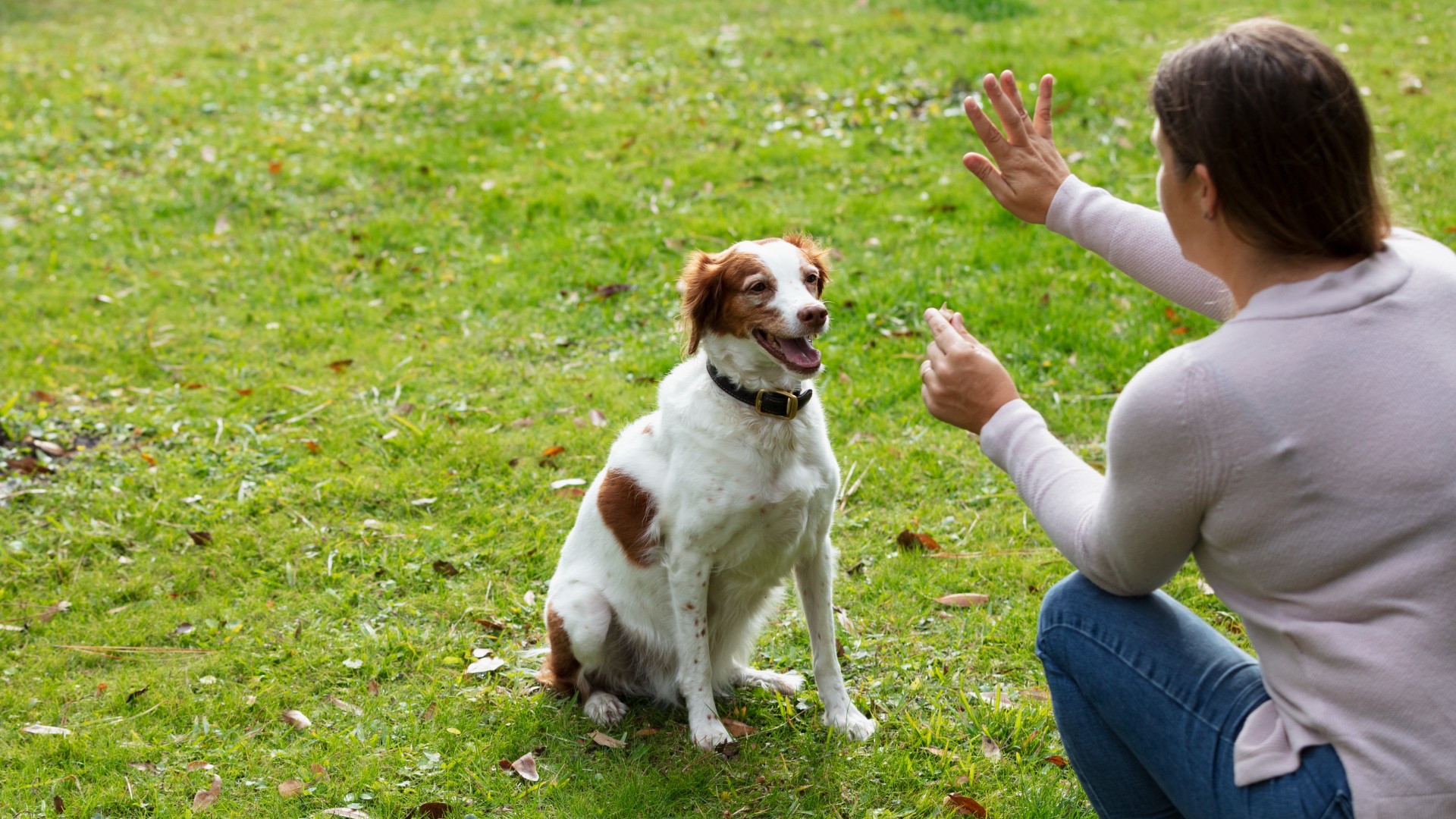
Let's be honest — training our dogs is no walk in the park. Filled with highs and lows, our canine companions have good and bad days just like we do, so it's important to be realistic about how long training a new skill or behavior will actually take.
However, one thing that can slow our dog's progress more than necessary is when we as their handlers making a range of common mistakes. These can lead us to think we have to learn how to deal with a badly behaved dog, when in reality, we've simply not been clear enough with our pup about what we need from them.
To help you steer clear of these, Carolyn Martell, an expert trainer and founder of Good Dog Training, has outlined the mistakes she sees dog owners making on a regular basis in a recent Instagram post — and being aware of what follows will help you start to make progress towards your dog's training goals.
So, grab a pack of the best dog treats (you'll need them!) and read on...
1. Thinking it's just about your dog: According to Martell, dog training is only partly about the dog — the handler also has a big role to play. One of the biggest tips for training your dog on your own is to remember that your pup is only part of the equation. "Handler skills play a big role," says Martell.
2. Making errors with leash training: There are lots of common loose leash walking mistakes we can make as pet parents and avoiding these can help ensure we have as calm a walk with our canine as possible.
"Are you constantly choking up on the leash so that the leash is always tight?," asks Martell. "Or are you constantly letting the leash out every time your dog pulls? Are you tense and yanking or smooth and consistent?" These are all questions that will help you refine your leash training.
3. Not communicating well with your dog: Just like there's an art to communicating with other humans, there's also an art to communicating with our canines. Martell says it's important to give clear and concise cues and feedback, to avoid talking too much or too loudly, and to avoid overwhelming your dog by being too big of a cheerleader. Martell says it's important to ask yourself "is your communication style appropriate for your dog?"
4. Checking in on an infrequent basis: Regular check-ins with your dog are super important as this will quickly let you know if they're feeling scared or anxious, or if they're confused or struggling. Martell uses loose leash walking as an example when it comes to illustrating this point, asking the question, "do you put the leash on your dog and then check out?", if so, remember to keep checking in with your dog to assess how they're doing.
5. Forgetting to pay attention to the environment: "Are you helping your dog or setting them up to fail?" Martell asks, adding that being attentive to the environment or situation is key in helping your pup master new skills and behaviors. "When I'm on the trail with a dog and see a huge pile of horse poop, I start to plan. I don't wait until they're gulping it down and then get mad. I'll walk way around or ask them to heel past it with lots of treats and support."
6. Being permissive: Setting boundaries with your dog (and sticking to them) is crucial when it comes to your training success. "Have you clearly given your dog permission to go and greet that person or did you just silently let them drag you over?," Martell asks, adding that you need to be clear with your yes and clear with your no.
Training is hard work, no matter how amazing your dog is. It takes time, patience and consistency to start seeing results, and extra support can be helpful on those days where things are feeling tough. We recommend reaching out to an expert for advice and guidance when you need it — just be sure to check out our guide to how to spot dog trainer red flags to ensure you're working with someone who's suitably qualified.







